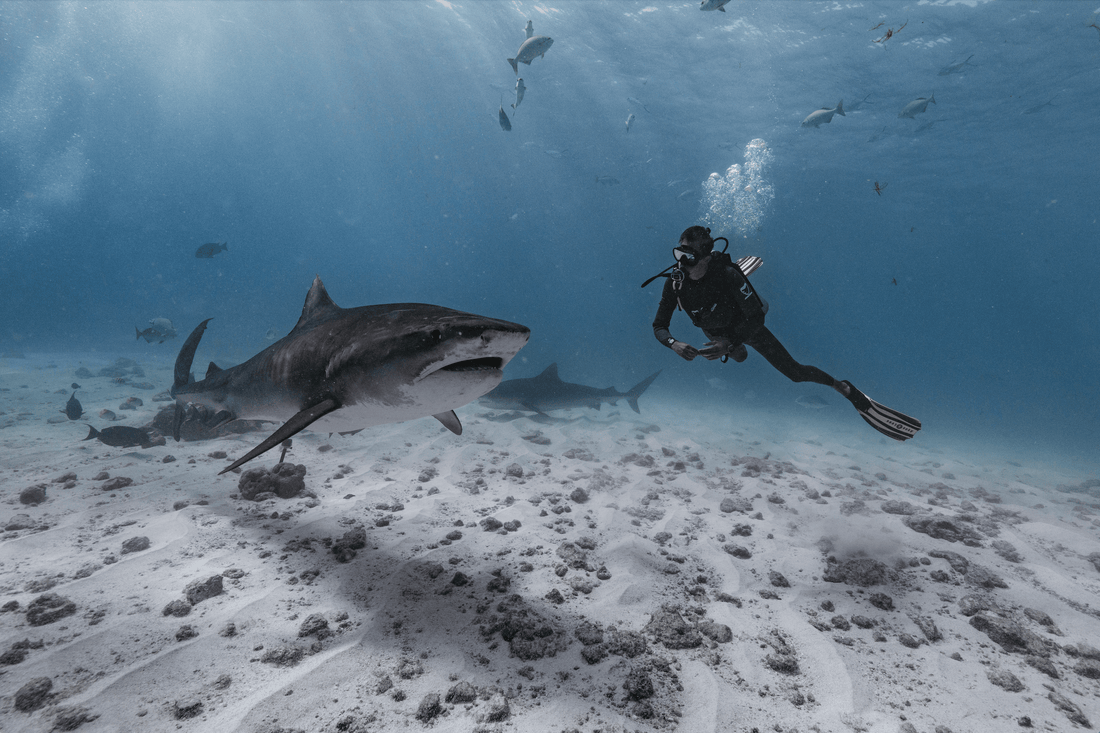For decades, scientists and ocean users have speculated that shark bites on humans may largely be due to mistaken identity. But what does that really mean—and is it just an assumption, or backed by science?
Recent studies, like those by shark researcher Dr. Erich Ritter and as reported by the Underwater Times, suggest that most shark bites on humans are not deliberate predatory attacks, but rather cases of investigatory bites or misinterpretation by the shark of unfamiliar objects in their environment.
Sharks don’t ‘Hunt’ Humans
Despite the headlines, sharks don’t naturally prey on humans. According to research, most shark bites occur in areas where sharks are feeding, mating, or navigating murky waters, where visibility is low and the likelihood of mistaking a human silhouette for prey, such as seals, is higher.
Dr. Ritter’s research emphasises that many bites occur when sharks are provoked, either knowingly or unknowingly by human actions. For instance, splashing, erratic movements, or spearfishing can attract sharks, leading to exploratory bites.
What Do the Wounds Tell Us?
A crucial part of the study involved comparing the bite wounds inflicted by white sharks on pinnipeds (like seals and sea lions) to those on surfers. If sharks were truly mistaking surfers for their natural prey, we’d expect to see similarly severe injuries. But the data suggests otherwise. In over 76% of shark-surfer incidents, the wounds were only superficial or moderate—injuries that wouldn’t incapacitate a pinniped. In fact, many cases showed damage levels inconsistent with the high-speed, high-force ambush attacks sharks typically use to hunt agile pinnipeds.
Strikingly, 15% of cases involved no damage to the person or board at all. Even in second bites—when you might expect a shark to double down if it believed it had struck prey—over 64% still resulted in minor or no damage. These findings suggest sharks may be investigating, not hunting, when they bite humans. The low level of damage points toward exploratory behaviour, possibly using their bite to gather sensory information, rather than a full predatory strike.
The Role of the Environment in Mistaken Identity
Environments like river mouths, murky estuaries, and harbours are hotspots for species like bull sharks, responsible for many bites globally. In these environments, sharks rely more heavily on non-visual senses, and their risk of confusing humans with prey is heightened.
Additionally, sharks might mistake humans for large prey animals due to body posture or water activity, such as surfers lying flat on boards mimicking seals.
Behaviour Over Appearance
The key to avoiding unwanted shark encounters lies as much in behaviour and environmental awareness as it does in appearance.
Some practical ways to reduce the risk include:
-
Avoiding murky waters, especially at dawn, dusk, or after heavy rains.
-
Steering clear of known shark feeding zones or areas with active fishing.
-
Minimising splashing or erratic movements.
Shark Stop’s Role in the Bigger Picture
At Shark Stop, our shark bite-resistant wetsuits are designed with ultra-strong UHMWPE nanofibres to reduce lacerations and blood loss, giving victims more time to seek help, and a better chance at survival. While our product is focused on reducing injury severity if a shark bite does occur, we also hope that through education like this, we can help contribute to avoiding shark bites. We believe in education and respect for sharks, helping ocean users understand that many shark encounters are the result of curiosity or environmental factors, rather than outright aggression.
While we continue to develop shark-safe technology, the best approach is to respect sharks, understand their behaviour, and avoid putting ourselves in situations where mistaken identity is more likely. The more we learn, the safer both humans and sharks will be.

